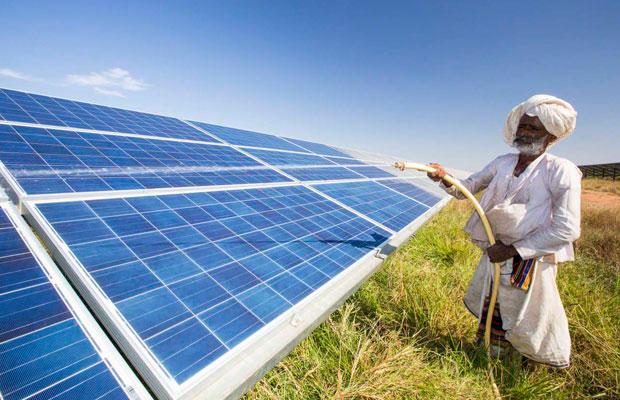Highlights :
- Though the report considers various scenario’s the data is an important starting point to consider the path India needs to take or avoid, as the case might be.

The US Energy Information Administration (EIA), in its energy outlook report for 2023, has come out with a number of projections and scenarios that might surprise people. Not least of which is the attention to India, which the report projects, will become the world’s largest solar market by capacity additions, overtaking China and the US, the two markets it trails currently. The report adds a caveat of course, calling it “the most probable prediction of the future but rather as a baseline for estimating the effects of policy or technology changes”.
Going beyond solar, the report is much more confident that a growing economy and per capita incomes will lead to a tripling of energy use in Indian homes. In making the case for India, the report points out that it projects the Asia-Pacific region’s GDP will grow faster than the global average, and a declining population will slow GDP growth in China relative to recent history. Population growth across its cases is concentrated in Africa, India, and Other Asia-Pacific, which combined, contribute 94% of the expected 1.7 billion people added to the global population by 2050 across all cases in our projections.
Global industrial-sector energy consumption is projected to grow between 9% and 62% and transportation-sector energy consumption to grow between 8% and 41% from 2022 to 2050, depending on the case. Increasing income and rapid population growth, particularly in India, Africa, and Other Asia-Pacific, leads to continued growth in buildings’ energy consumption in its projection.
The intensity of energy-related CO2 emissions (CO2 emissions per unit of primary energy) decreases through 2050, despite overall emissions increases in its projections. The decreasing emissions intensity reflects a transition toward lower-carbon energy sources. These trends of decreasing emissions intensity could be offset by shifts toward increased manufacturing in certain regions. For example, we project that declines in energy intensity will be offset by sectoral shifts toward manufacturing and that industrial energy consumption grows the fastest in India, Other Asia-Pacific, Africa, and Other Americas. Across most of their cases, China is the region with the largest level of industrial energy consumption decline, reflecting the commercial service sector’s growing share of China’s economy and manufacturing’s shrinking share of total industrial activity.
Electric vehicles (EVs) are projected to account for between 29% and 54% of global new vehicle sales by 2050; China and Western Europe account for between 58% and 77% of those EV sales across all cases. Continued increases in EV adoption leads to a projected peak in the global fleet of internal combustion engine light-duty vehicles (LDVs) between 2027 and 2033.
The India Story
India is expected to be the only country to install more than 1TW of solar capacity by 2050, with a total installed capacity of 1.1TW, more than double the 468GW installed in Europe and Eurasia. At a growth of 11%v annually to 2050, India’s forecast capacity will also account for more than one-eighth of the world’s installed solar capacity by 2050 according to the EIA. The EIA notes that, in 2022, China accounted for 420GW of the 1.4TW installed globally, making China single-handedly responsible for almost one-third of the world’s installed solar capacity.

In India, electricity use in buildings in the residential sector grows faster than in other sectors because of increased demand for air conditioning, electric appliances, and other devices. Disposable income grows faster in India than anywhere else in the world, increasing, on average, 3% to 5% annually. Compared with 2022, we project that even in the Low Economic Growth case, with incomes growing more slowly than in our Reference case, each person in India will use nearly three times as much residential electricity, on average by 2050.
In the High Economic Growth case, by 2050, India’s energy consumption across all end-use sectors more than triples relative to 2022. Growth in the commercial sector outpaces overall industrial growth from 2022 to 2050.
Storage solutions, considered so critical to renewables spread, will account for between 4% and 9% of global power capacity by 2050. From just 1% currently.
Natural Gas Speeds Ahead
Among fossil fuels, Natural gas will lead, including in India. Natural gas is the fastest-growing fossil fuel globally; consumption grows from 153 quads in 2022 to a range of 170 quads to 241 quads by 2050 across cases, an 11% to 57% increase. Growth in natural gas consumption is widely distributed regionally, but it is most notable in India, the Other Asia-Pacific region, China, Africa, Russia, the Middle East, and the Other Americas region. The projected rise in natural gas consumption is most pronounced in the electric power sector, where it replaces retiring coal-fired generation, and the industrial sector, where it primarily fuels expanding industrial production.






























